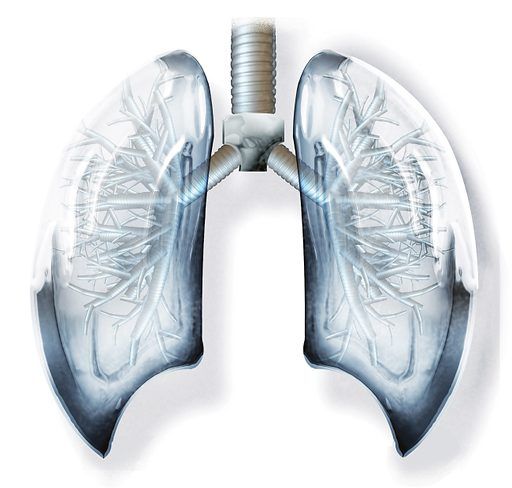Osimertinib/Chemo Yields Favorable OS Trend in EGFR-Mutated NSCLC
Treatment with osimertinib plus chemotherapy also shows a consistent survival benefit across prespecified NSCLC subgroups in the phase 3 FLAURA2 trial.
“These results further validate the importance of this additional treatment option, especially for those patients whose cancer has spread to the brain, those with L858R mutations, or other cause for poorer prognosis," according to Pasi A. Jänne, MD, PhD.

Combining osimertinib (Tagrisso) with chemotherapy elicited a favorable trend in overall survival (OS) following 2 years of follow up among patients with locally advanced or metastatic EGFR-mutated non–small cell lung cancer (NSCLC), according to a press release on updated findings from the phase 3 FLAURA2 trial (NCT04035486).1
According to data presented at the 2024 European Lung Cancer Congress (ELCC), the median OS was not reached (NR; 95% CI, 38.0-not calculable [NC]) with osimertinib plus chemotherapy and 36.7 months (95% CI, 33.2-NC) with osimertinib alone (HR, 0.75; 95% CI, 0.57-0.97). The data maturity was 41% at the time of the second interim OS analysis. Additionally, findings highlighted a consistent OS benefit with osimertinib plus chemotherapy across prespecified subgroups based on sex, race, EGFR mutation type, patient age, smoking history, performance status, and central nervous system (CNS) metastases.
In the osimertinib/chemotherapy and osimertinib monotherapy arms, respectively, the median time to first subsequent therapy (TFST) was 30.7 months (95% CI, 27.3-NC) and 25.4 months (95% CI, 22.8-NC; HR, 0.73; 0.56-0.94). Additionally, the median progression-free survival on second-line therapy (PFS2) in each respective arm was 30.6 months (95% CI, 29.0-NC) and 27.8 months (95% CI, 26.0-NC; HR, 0.70; 95% CI, 0.52-0.93), and the median time to second subsequent therapy (TSST) was NR (95% CI, NC-NC) and 33.2 months (95% CI, 28.2-NC; HR, 0.69; 95% CI, 0.51-0.93).
Additional safety analyses of the FLAURA2 trial presented at ELCC highlighted that the onset and severity of adverse effects (AEs) were the most prominent when chemotherapy was administered after osimertinib; these toxicities generally subsided during maintenance therapy. Additionally, patient-reported outcomes (PROs) demonstrated a trend towards improved health-related quality of life (HRQOL) as well as symptoms including dyspnea, chest pain, and cough.
“The improvement in post-progression outcomes with chemotherapy added to standard-of-care osimertinib is encouraging for patients with advanced EGFR-mutated lung cancer, particularly the encouraging trend toward [OS],” principal investigator Pasi A. Jänne, MD, PhD, a medical oncologist at Dana-Farber Cancer Institute, said in the press release.1 “These results further validate the importance of this additional treatment option, especially for those patients whose cancer has spread to the brain, those with L858R mutations, or other cause for poorer prognosis.”
Investigators of the open-label, international phase 3 FLAURA2 trial assessed 557 patients with stage IIIB to IIIC or stage IV EGFR-mutated NSCLC at more than 150 centers across more than 20 countries. Patients received osimertinib at 80 mg once a day orally plus pemetrexed at 500 mg/m2 and cisplatin at 75 mg/m2 or carboplatin area under the curve 5 every 3 weeks for 4 cycles before osimertinib and maintenance with pemetrexed every 3 weeks.
The trial’s primary end point is PFS. The trial is ongoing, and investigators will continue to assess secondary end points including OS.
The FDA approved osimertinib plus chemotherapy as a treatment for patients with advanced or metastatic NSCLC harboring EGFR exon 19 deletions or exon 21 L858R mutations in February 2024.2 Supporting data for this approval came from the FLAURA2 trial.
“FLAURA2 reinforces [osimertinib] as the backbone therapy in EGFR-mutated [NSCLC] either as monotherapy or in combination with chemotherapy, delivering the longest reported [PFS] benefit in the 1st-line advanced setting. We’re excited to see a favorable trend toward [OS] and look forward to seeing this data mature over time,” Susan Galbraith, executive vice president of Oncology Research & Development at AstraZeneca, the developers of osimertinib, concluded.1
References
- Tagrisso with the addition of chemotherapy showed favourable trend in overall survival in EGFR-mutated advanced lung cancer with further follow up in FLAURA2 phase III trial. News release. AstraZeneca. March 21, 2024. Accessed March 22, 2024. https://tinyurl.com/2bnw7z3m
- FDA approves osimertinib with chemotherapy for EGFR-mutated non-small cell lung cancer. News release. FDA. February 16, 2024. Accessed March 22, 2024. https://bit.ly/49AeXjy